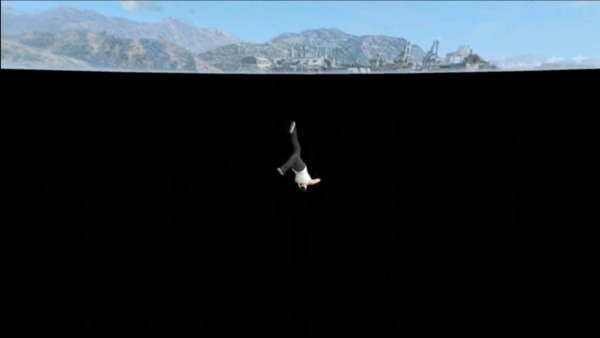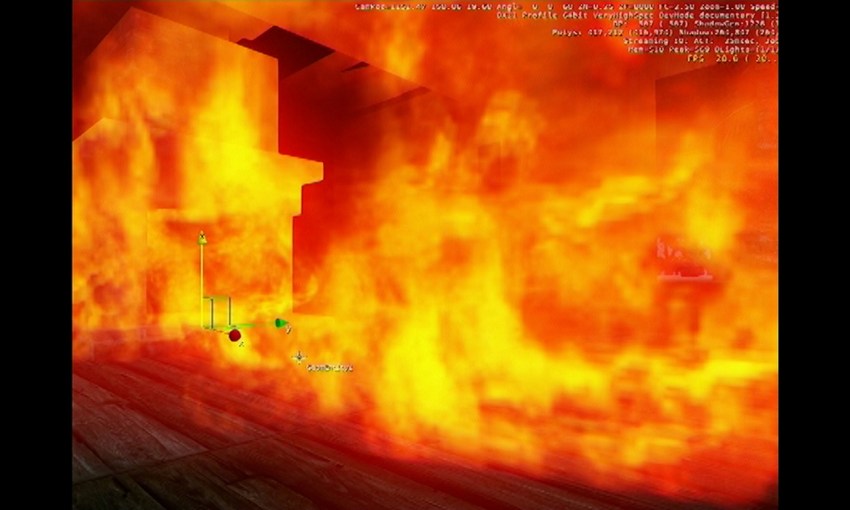A walk through ‘Metaverse’ delivers an immersive, unsettling encounter with the internet in all its invasiveness, making this a must for contemporary art lovers and dystopia junkies alike.
Casting the net wider with ‘Metaverse’
ACE Open’s artistic director Patrice Sharkey is excited about the gallery’s new group exhibition Metaverse, which foretells dystopian visions in our increasingly inescapable relationship to technology.
“There are no white walls. You are thrown into these worlds that the artists have created,” Patrice explains.
“They are making physical and real this [online] world, which infiltrates our mind in the ether and is insidious in that way.”
Metaverse features installations by Harun Farocki, Roy Ananda, Giselle Stanborough and Britt d’Argaville, and it’s the latter’s work ‘the chords are kissing (Chateau Marmont)’ that marks the entry point to the exhibition.
Patrice calls it “a sculptural intervention” and “a force to encounter” for the audience; antiquated electrical cords and Ethernet cables are its main components.
“It’s penetrative [and] quite violent in the way that it bursts out and inhabits the room,” she says.
“Britt also uses earthwool and PVA, so there’s something quite visceral about the kind of finish on it.”
In curating the exhibition, Patrice has brought the works together into a dialogue with each other, with the encounter delivering a “whole-body experience.”
“When you enter the main gallery, you’ll be met by Giselle’s installation,” she says.
“This takes you on a journey. Then you walk through [a] long passage with a conspiratorial feel and Roy’s work… [exiting] in the back of the gallery where there’ll be a large scale projection of Harun’s work.”
Her choice of artists was a deliberate mix of local, national and international.
Roy Ananda is a visual artist, writer and educator practising on Kaurna Country.

Roy Ananda flanked by his work
“Both conceptually and materially, he’s incredibly thorough and unique to here,” Patrice says.
“His point of view around pop culture and fanaticism – taking that impulse to the edge – is very unique and distinct.
“The way that translates materially into this fastidiousness and over-archiving and categorising… Just the amount of labour involved is incredibly impressive as well.”
Roy’s contribution includes an idiosyncratic self-portrait created by sharing the results of 1000 online personality tests.
Presented as isometric, diagram-driven designs, the installation explores fanaticism, how conspiracy theories form and recalls an earlier era of computing, when the promise of the internet seemed romantic and utopian.
Britt, who works predominantly in sculpture and photography, is based in Naarm (Melbourne), while intermedia artist Giselle Stanborough practises on Gadigal land in Sydney.
In ‘Cinopticon’, originally created for her solo exhibition at Carriageworks in Sydney in 2020, Giselle investigates how we become willing participants of online surveillance.
Her giant wall-painted diagrams analyse online surveillance practices through a political and psychoanalytic frame. A roving searchlight moves through the space to choreograph the drawings and recalls government control associated with Stalinism or the Gestapo.
“It’s a new version, [Carriageworks] was the first iteration of this work, which was on display for most of when COVID happened,” Patrice says.
“It’s been really special to recreate this important work… The graphic treatment, the experience of the spotlight and the way that you traverse this work – it’s really smart and immersive.”
The international component to the exhibition is from the late Harun Farocki, whose work ‘Parallel I-IV’ was released posthumously.

‘Parallel II’ by Harun Farocki
Harun’s four-part cycle deals with the image genre of computer animation. The series focuses on the construction, visual landscape and inherent rules of computer-animated worlds.
Patrice introduces him as a “very significant artist and filmmaker who, for all of his career, has been looking at issues around online worlds, or misuses of power”.
“As far as I’m aware, Harun Farocki hasn’t been shown or, at least, hasn’t had a major showing in Adelaide, which is one of the reasons [why] I wanted to include him,” she says.
“This is his final piece. As his last contribution to his catalogue of work, it becomes a very important video.
“[The video is significant] in tracking the development of the evolution of graphics and animation, where the hyper-reality of gaming and online worlds is overlaid. The capacity for digital to replicate what reality looks like is overlaid with this increase in violence and use of weaponry and guns.
“So, this kind of idea that this space is getting more dangerous, the more real it gets, and the more it bleeds into our real lives.”
Asked about the physical and emotional journey the audience takes through the exhibition, Patrice talks about the progression of violence giving way to a voice, albeit one that isn’t soothing.
“It’s a computer-generated voice – the human-ness is removed in that regard.
“But it is very philosophical.”






